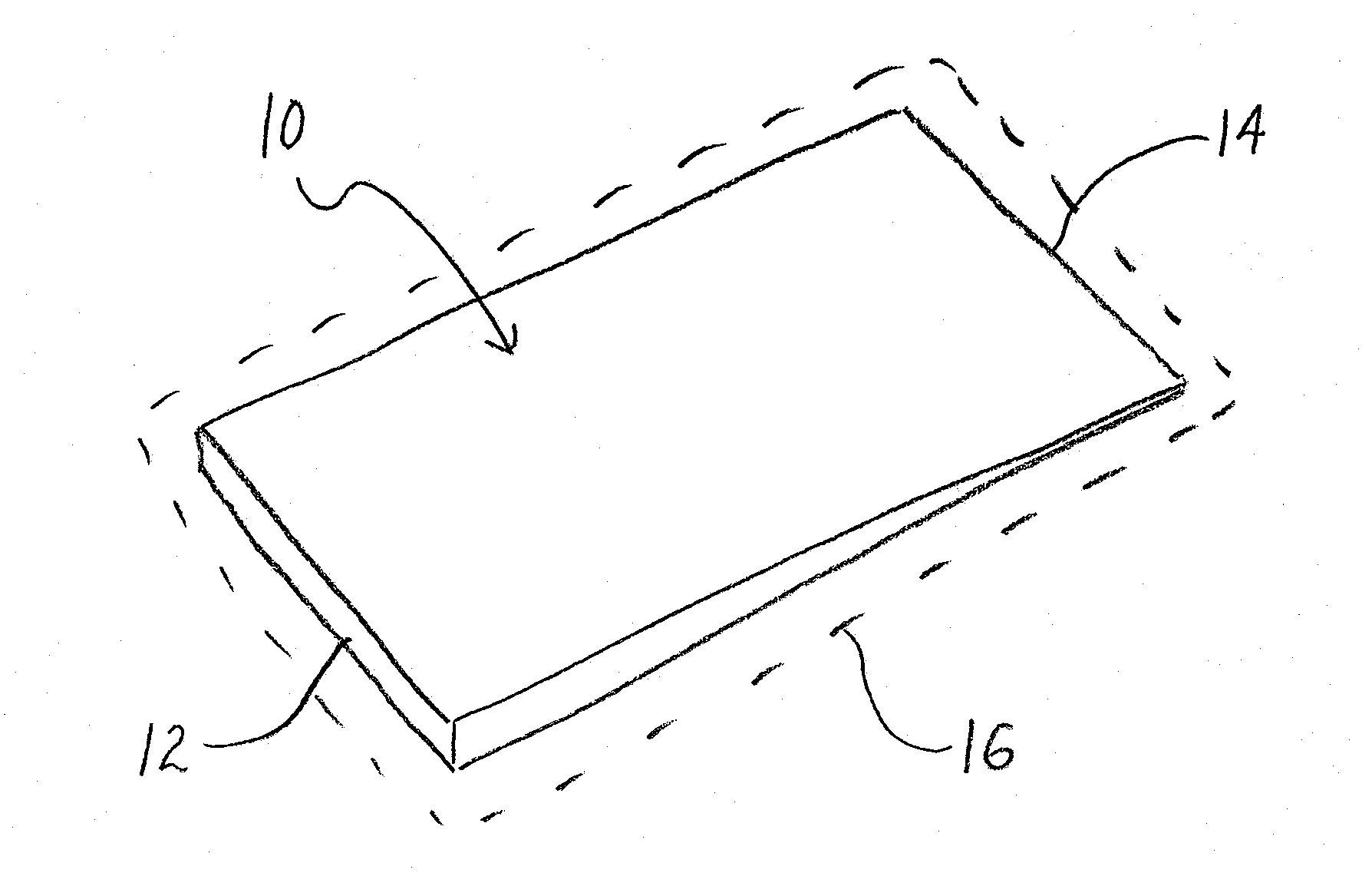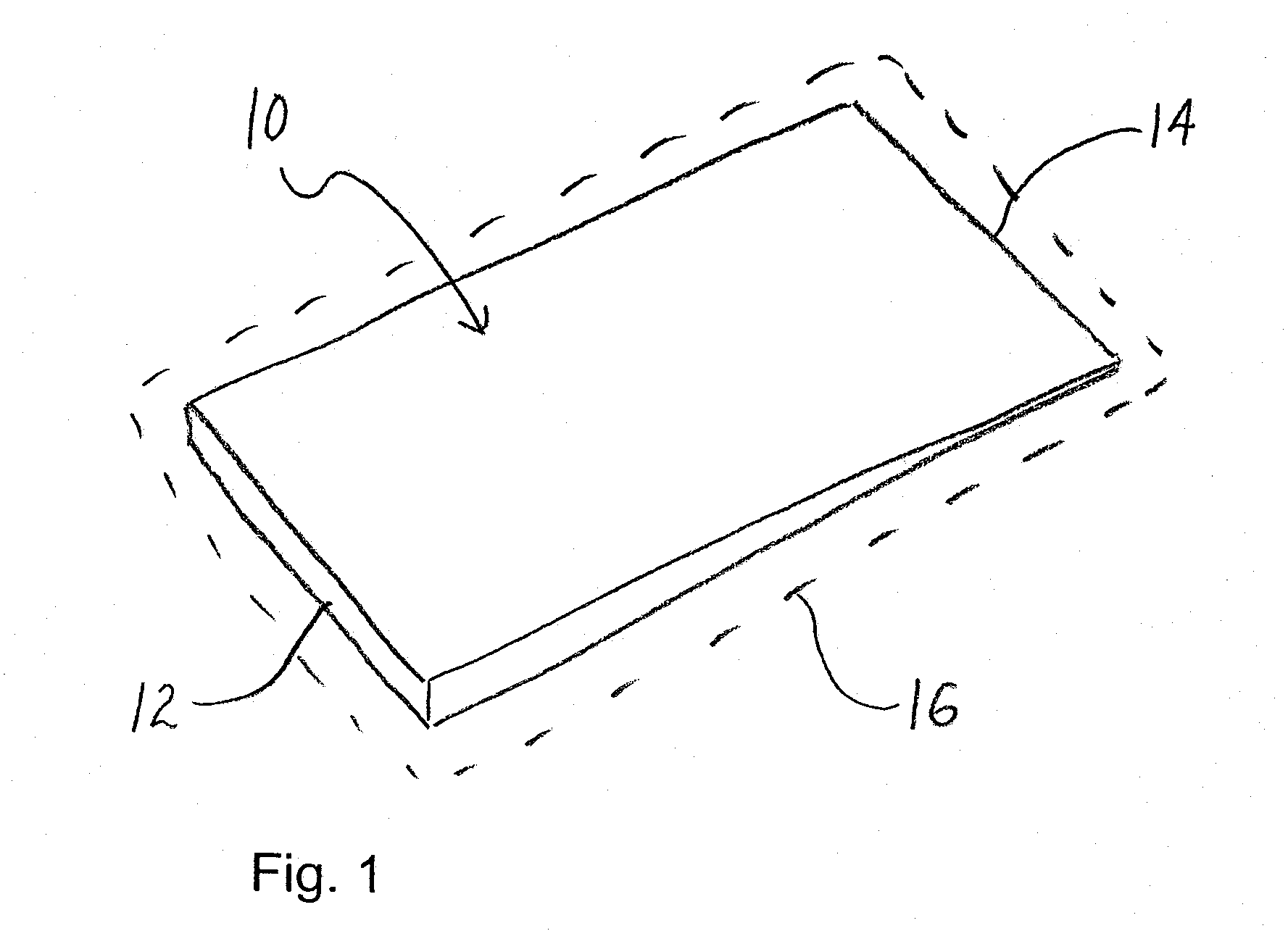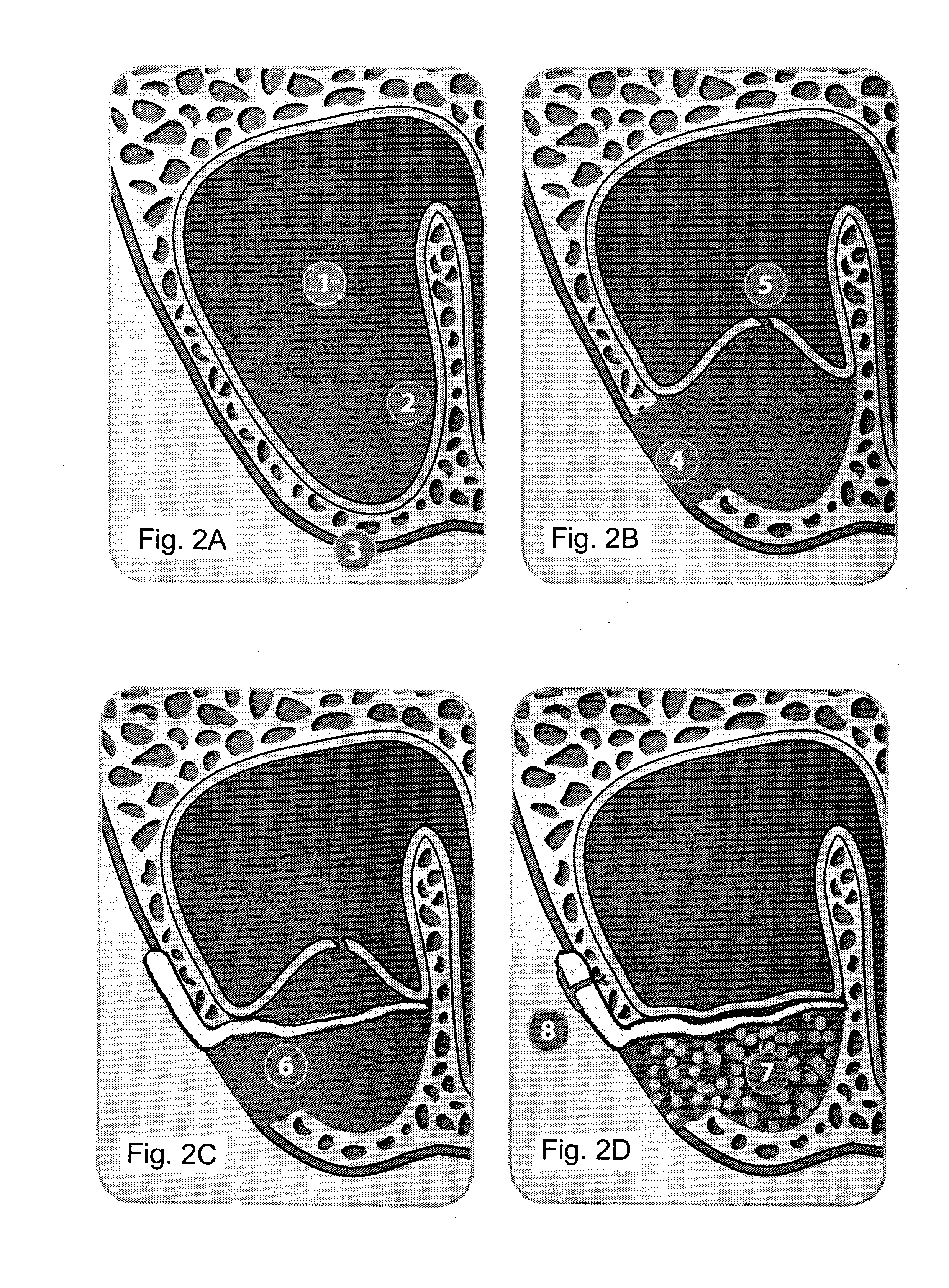Collagen Biomaterial Wedge
a biomaterial and collagen technology, applied in the field of collagen biomaterial wedges, can solve the problems of small amount of porosity disproportionally reducing mechanical properties, growth factors or particulate matrices at a targeted location, and does not contain or retain cells, etc., to achieve stronger/stiffer collagen membranes, weak collagen structures, and increased strength
- Summary
- Abstract
- Description
- Claims
- Application Information
AI Technical Summary
Benefits of technology
Problems solved by technology
Method used
Image
Examples
Embodiment Construction
[0035]FIG. 1 is a perspective view of a wedge-shaped, densified collagen biomaterial membrane according to the invention. As shown in FIG. 1, membrane 10 has a generally rectangular configuration, but it should be understood that the membrane could as well have an oval or generally triangular configuration. Membrane 10 has a thicker edge 12, which provides increased strength for handling and / or for attachment to a bone adjacent the surgical site with one or more bone tacks in order to hold the membrane in the desired position. Membrane 10 tapers gradually to a thinner edge 14, which provides increased deformability in order to facilitate proper mating with the configuration of the surgical site. The membrane can be easily trimmed during surgery with scissors or a scalpel for a custom fit to the surgical site. The membrane need not be wetted prior to implantation, but can be wetted in place with saline or blood from the surgical site. Membrane 10 can be bent to a desired configuratio...
PUM
| Property | Measurement | Unit |
|---|---|---|
| Temperature | aaaaa | aaaaa |
| Temperature | aaaaa | aaaaa |
| Temperature | aaaaa | aaaaa |
Abstract
Description
Claims
Application Information
 Login to View More
Login to View More - R&D
- Intellectual Property
- Life Sciences
- Materials
- Tech Scout
- Unparalleled Data Quality
- Higher Quality Content
- 60% Fewer Hallucinations
Browse by: Latest US Patents, China's latest patents, Technical Efficacy Thesaurus, Application Domain, Technology Topic, Popular Technical Reports.
© 2025 PatSnap. All rights reserved.Legal|Privacy policy|Modern Slavery Act Transparency Statement|Sitemap|About US| Contact US: help@patsnap.com



